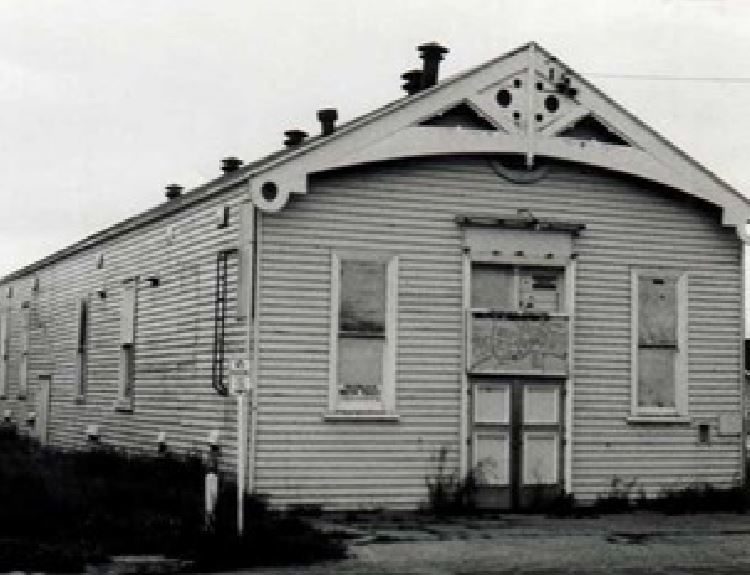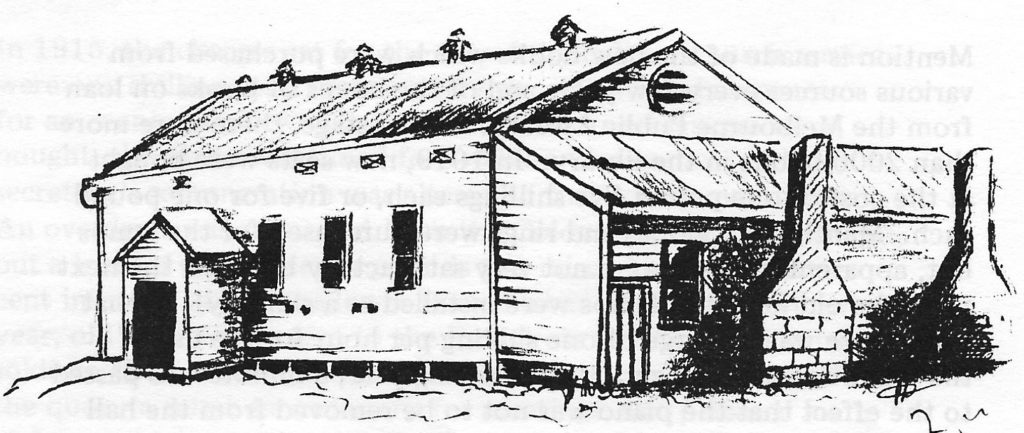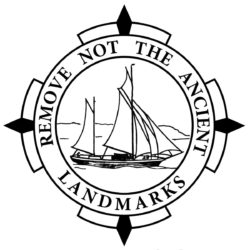
(Photo: Alfred Wesson. Source: Mechanics’ Institutes of Victoria Inc, MIRC, Baragwanath Collection).
During the 1890’s the residents of Inverloch decided to build a Mechanic’s Institute. Money for this hall was raised locally by concerts and entertainment’s and in 1897 the building was opened as the Mechanics’ Institute & Library. For eighty-one years this building with additions and improvement over the years was used until destroyed by fire in July 1978. For seventy-seven years (until the Deeds to the hall were handed to the Shire of Woorayl in 1974) a local Committee and Trustees maintained the hall and library.
The minute books for this period mirror some of the social life of the community…… concerts, marriages, card evenings, dances, Church Services, Vaudeville entertainments, piano lessons, sports evenings, (badminton, table tennis etc.) Polling booths on Voting days, distribution of ration cards, Welcome Home evenings to soldiers returning from World Wars I and II, Lighting Up celebrations when S.E.C. power reached the town, bazaars and magic Lantern nights, then Moving Pictures and sound film.
By Eulalie Brewster. (Originally published in 1980 by the Leongatha Historical Society)
During the 1890s, a group of Inverloch residents decided to build a Mechanics’ Institute for the town. Mr & Mrs Wyeth organised the first concert to raise funds for the building. This concert raised £75. A Mr Youll planned the building and a Mr Nation from Melbourne was the builder in 1897.
This hall stood on the corner of A’Beckett and Reilly Streets, in the area now occupied in 2017 by the memorial Cenotaph and part of The Hub building.
Several of the Institute’s minute books between 1897 and 1945 are missing, but those still in existence make interesting reading. For instance, in 1914, the secretary / caretaker’s remuneration was 20 per cent of the gross receipts for the use of the hall. Leasing prices were £1 ($2) for a full night and 10s 6d ($1.05) for a half night. Admission to concerts was two shillings and one shilling, and to dances, three and sixpence for gentlemen while the ladies provided supper.
During this year (1914) flooring and reblocking were authorised, the fences were painted (with three coats of paint), the wires were restrained, the windows were frosted, three lamps were installed and a tin of benzene was purchased.
In 1915, the charges set for the use of the hall for church services were one shilling for a morning service and two and sixpence for an evening service. That year new cups and saucers were bought, the piano was tuned for 12/6 and the secretary’s remuneration was altered to £5 per annum. An overdraft was requested from the Colonial Bank in Wonthaggi, but a loan of £27 was raised locally at 7½ per cent, old books were sent to the Red Cross for distribution to soldiers, there was a reduction in the committee numbers and in the quorum numbers necessary for meetings, and personal loans at 5 per cent interest were taken out to pay off the previous year’s loan of £27.
The building housed the Mechanics Institute and Library. Mention is made in the minutes of the new books which were purchased from various sources every few years and of the boxes of books on loan from the Melbourne Public Library. At one stage there were more than 2000 books in the library, as elderly long-term resident Mr Bertie Ruttle very proudly told me in 1978!
In 1919, new seats were bought at the cost of £1 5s each, or five for £1 each. Mantles and globes and rings were purchased for the lamps but, apparently, these were not very satisfactory because the next year the old kerosene lamps were installed as a standby!
In that year there was a charge of one shilling per hour for the use of the piano for practice and the following year a minute was passed that the piano was not to be removed from the hall for any purpose whatsoever.
A variety of entertainments were held for fund-raising for both hall funds and other groups. Cups and saucers continued to be replaced over the years, scrub had to be cut, fencing done, windows frosted and general maintenance on the building continued.
At one time, all local committees were allowed use of the back room free of charge, and all users of the hall were told that nails were not to be driven into the floor! New charges were set in 1922 for the use of the hall for auctions, vaudeville shows and conventions.
In 1924 the Anglican Church requested permission to remove its organ. This was granted on condition that the church reimburse the hall committee for the money that had been spent on the organ’s insurance. Six months later the church was still using the hall and being allowed one hall lamp at a charge of sixpence per service.
About this time the Anglican Church building must have been finished at Inverloch and the organ removed, for in February 1925 the Methodist Church trustees asked permission to place their organ in the hall – the hall committee to take no responsibility for it. The minutes for the next 20 years are missing, but it is assumed that this organ was removed from the hall when the Methodist Church building was erected.
When Mr C. Wyeth built Pine Lodge in 1930, he installed a generating plant to supply power for lighting. On special occasions, a wire was connected to the hall for electric light and for five years a line was connected to the jetty for street lights. In 1934 the State Electricity Commission brought a single-phase line from Kongwak to Inverloch for light and power, and this was used until 1946 when it was replaced by a three-phase line.
The hall records, from 1945 until the Deeds of the Hall were handed to the Shire of Woorayl in 1974 and the final minutes written, continue to mirror some of the social life of the Inverloch community and the efforts made by the committee members to maintain the hall.
| The records also reflect rising costs over the years, as the rental charges rose from 10/6 for a half night in 1914 to £1 for a vaudeville entertainment in 1922. When the Badminton Club was allowed the use of the hall in 1948 it was charged 10 shillings per night and allowed to take the streamers down. This must have been an annual undecorating after the summer dance season for in 1952 it was again given permission to take down streamers. Most committee meetings were concerned with maintenance of some sort: spouting and tanks which needed replacing or repairing; toilets of various types needing to be built or repaired (Shire pan fees rose from £9 in 1955 to £40 in 1966); lights and their replacements – six lights were installed in 1949 for £10 and in 1955 the 150 watt globes in the hall were replaced by six fluorescent lights; and scrub around the hall needed frequent cutting (in 1946, a letter had to be written to the Methodist Church authorities concerning the danger of fire on their land). Piano tuning and repairs were often mentioned and a new piano was purchased for £110 in 1949. Painting recurred – one coat on the roof cost £6 in 1923 but 30 years later the entire exterior was painted for £238. Ration cards were distributed at the hall in 1946. Letters of thanks were sent to former librarians; to local constables for their help in maintaining order at the summer dances; and minutes of appreciation record the work done by a succession of committee members over 81 years. This historic building burnt down early on the morning of July 30, 1978. |


